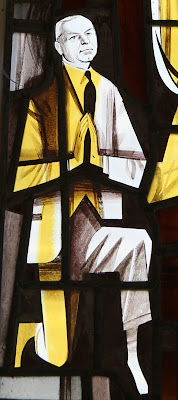As we move into 2018, the list of what we are up against today is daunting. Just ponder on these self-inflected burdens
- Poverty
- Hate crime
- Austerity
- Democratic deficit
- NHS and teaching underfunding
- Local government emasculation
- An ineffective government of buffoons and right-wing clowns
- An ineffective opposition
- Brexit
- Constitutional crisis
- Legislative abuse
- Food Bank growth
- Increasing social inequality
Me? Maybe my problem is that I’m easily offended and outraged. Underneath a gruff exterior is a big softie and, rather disconcertingly, I'm getting softer the older I get. Here are a few things that get my goat at the moment.
- I get offended when those we actually pay to care for our wants and needs, abuse the trust we place in them.
- I am also somewhat miffed when those we empower put their own population in harm's way for the sake of party political advantage or pure greed-driven self interest (see under any campaign ever, but more recently the EU referendum).
- They really p*ss me off when they steal from us, abuse their positions, sign our names on the dotted line for illegal wars, or sell arms to others for their wars and abuses of human rights.
- I am particularly offended when I see families in 21st century Cornwall go without. When they have to make a choice between feeding the children or paying the bills. And I do not exaggerate - I know that it's true.
- I get offended when those least able to defend themselves are preyed upon by empathy-free tossers in government who won’t know a day of hardship in their pampered, besuited, public expense fiddling, thieving, entitled lives. Those people, who know full well what they do and why they do it, are beneath contempt..
- I get infuriated by the deliberate infantilising of public debate and the patronising attitude of most politicians.
- I am contemptuous of those who profess adherence to a faith but act in ways directly opposite to the tenets of their faith.
- I almost burst a blood-vessel when I hear the normalisation of desperate situations that should be causing people to take to the streets to protest. Since when is it acceptable that the growth of food banks and the increase in the numbers of homeless on the streets is seen as 'normal'.
Or....
Or you can stand up and TELL them you’re as good as them. You can have a system that earns your vote, your loyalty, your appreciation and is obedient to the mandate you give it. You can have a government which offers care and aid to all of our population without favour, where and when it is needed. You can have a system of politics that rejects the tools of intimidation and fear because that’s how you want it. You can have a government that’s within the reach of the toe of your boot when it steps out of line, or when it’s politicians feel like dipping their sticky digits into the public kitty.
That choice is entirely up to us.
It’s not rocket science but it takes effort. It means getting off our arses and doing something. We do this together. We work together to fix this, or we lose more than you can possibly imagine. We dump the rosettes, the petty grievances, the chips on shoulders. We win by celebrating our differences and knowing that we are accepted by each other as a whole package. That’s kinda what it means to be a community, a population. We come from every walk of life imaginable and these days a fair few points of origin, but we ARE British citizens. Think about that for a second. Really think about what it means now and what it could mean.
You either govern for ALL, or you’re not fit to govern. Equally you either want a system of government capable of that, or you don’t deserve one.
I’ll leave it to you to make your own mind up, of course, but I know what I’d rather have. And that's it for 2017. No apologies for ending on a low note but I really am fearful about what I see as the dystopian future.





































